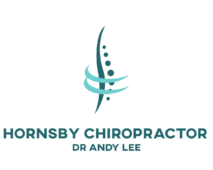Frozen shoulder, also known as adhesive capsulitis, is a condition characterized by stiffness, pain, and limited range of motion in the shoulder joint. It can significantly impact daily activities and diminish quality of life. However, with the right treatment approach, individuals with frozen shoulder can experience relief and regain full mobility. In this article, we will explore various treatment options available for frozen shoulder, focusing on methods that promote healing, reduce pain, and improve shoulder function.
Physical Therapy and Exercise
Physical therapy plays a crucial role in the treatment of frozen shoulder. A trained therapist will design a customized exercise program to help restore flexibility and strength in the shoulder joint. These exercises typically include stretching, range-of-motion exercises, and specific strengthening exercises targeting the muscles surrounding the shoulder. Regular physical therapy sessions can gradually improve mobility and reduce pain, leading to a faster recovery.
Non-Steroidal Anti-Inflammatory Drugs (NSAIDs)
To alleviate pain and reduce inflammation in the shoulder joint, healthcare professionals may prescribe non-steroidal anti-inflammatory drugs (NSAIDs). Medications such as ibuprofen or naproxen can help manage pain and decrease swelling associated with frozen shoulder. It is important to consult a healthcare provider before starting any medication and follow the recommended dosage guidelines.
Corticosteroid Injections
In some cases, corticosteroid injections may be recommended to reduce inflammation and relieve pain in the shoulder joint. A healthcare professional will inject corticosteroids directly into the affected area, providing targeted relief. These injections can help improve shoulder mobility and allow individuals to participate more comfortably in physical therapy exercises. It's worth noting that the number of injections should be limited due to potential side effects, and they are usually combined with other treatment modalities.
Hydrodilatation
Hydrodilatation is a minimally invasive procedure that involves injecting a sterile fluid, typically a mixture of saline and corticosteroids, into the shoulder joint capsule. This procedure helps stretch and expand the tight joint capsule, reducing pain and improving range of motion. Hydrodilatation is performed under imaging guidance to ensure accuracy and safety.
Manipulation Under Anesthesia (MUA)
In severe cases of frozen shoulder that do not respond to conservative treatments, manipulation under anesthesia (MUA) may be considered. During this procedure, the patient is placed under general anesthesia while a skilled healthcare professional manipulates the shoulder joint to break up adhesions and increase mobility. Following MUA, physical therapy is essential to maintain the gained range of motion.
Surgical Intervention
Surgery is typically considered as a last resort when other treatment options have been exhausted and significant functional limitations persist. Surgical interventions for frozen shoulder may include arthroscopic procedures to remove scar tissue or manipulation of the joint under anesthesia. Post-surgery, physical therapy is crucial for rehabilitation and optimal recovery.
For More Info:-
Frozen Shoulder Treatment Hornsby
Rotator Cuff Injuries Treatment Hornsby
Patellofemoral Tracking Syndrome Treatment Hornsby





Comments